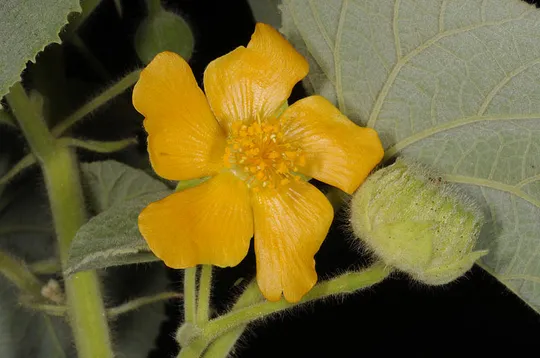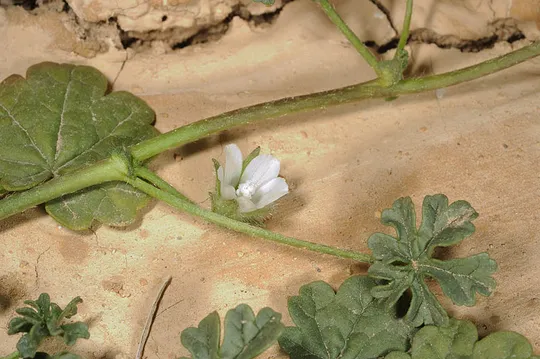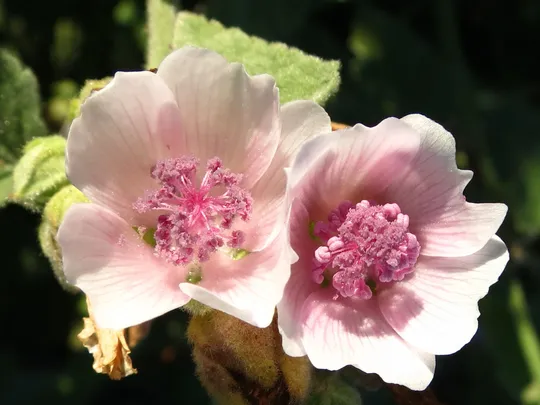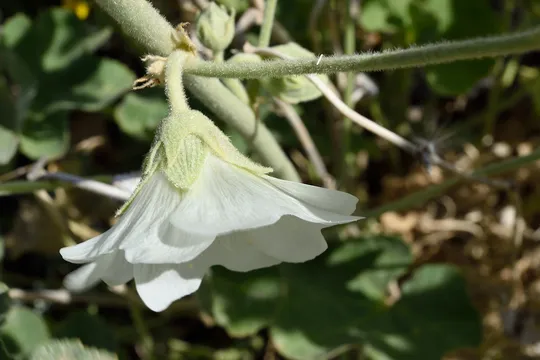Indian Mallow, Indian Abutilon
Abutilon indicum

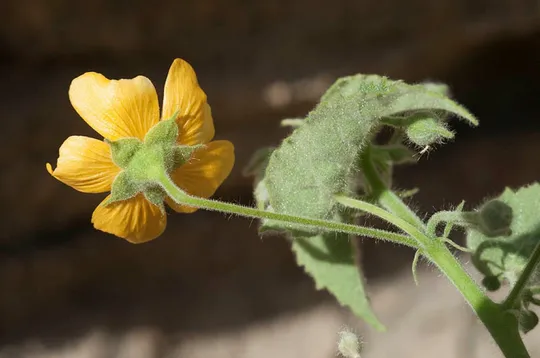
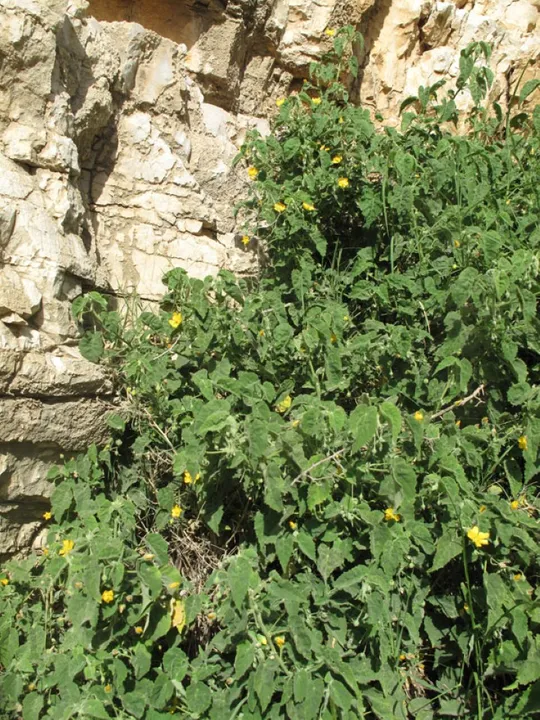
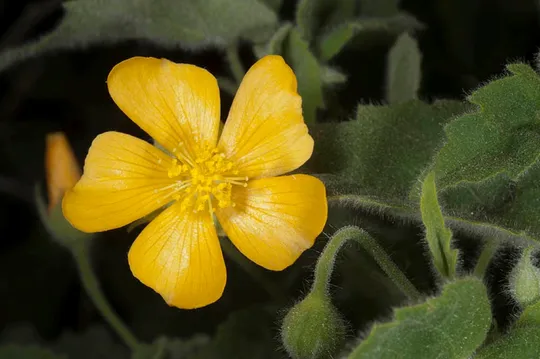
Abutilon indicum is widely used in folk medicine.
Abutilon indicum currently in four regions – the Jordan Valley Judean Desert, the Dead Sea and the southern Negev, at seven sites, it is estimated there are ten sites. In the Jordan Valley it was observed in the Ǧiftlik and near Uǧa; in the northern Judean Desert it is currently known from two sites – Wadi Kelt (most of the observations are from there) and near Karantal. It once grew on the rocks above Na’omi (= Na’ama) in the Jordan Valley. In the southern Negev it is found at two sites in Wadi Marzeva and is extinct in Wadi Tsin. In the Dead Sea region is known from the rocky canyons descending to Qumran and En Fashha. In the past it was also collected at En Gedi, but Michael Blecher reported that A. indicum was not collected or observed in En Gedi in the years 1992-2010.
In Israel Abutilon indicum
grows in rock pockets on terraced cliffs, on rocky
ground and slopes in canyons in the extreme hot desert along the Dead Sea Valley.
In the world it is mostly known from disturbed habitats.
The Genus Abutilon consists of
about 150 species found in tropical and subtropical regions. The range of life
forms in the genus varies from annuals to shrubs and low trees. The genus has a
characteristic calyx with five teeth and lacks the epicalyx characteristic of
other Malavaceae genera, such as Alcea, Malva and Lavatera.
Some of the Abutilon species, among them A. indicum, are invasive species that cause
environmental damage, particularly to agriculture in many warm regions,
especially in summer irrigated agricultural regions or in regions with summer
rains. In Israel four species of Abutilon are known. Three are local, with
a disjunctive distribution along the Jordan Valley (A. fruticosum, A. hirtum
and A. indicum) and the fourth one (A. theophrasti) is an alien American
species. The native Abutilon species are perennial shrubs whereas A.
theophrasti is an annual. A. fruticosum is the most common of the Abutilon species in the Jordan Valley. It
is a low shrub, with sparse and slightly silvery foliage; its leaves are
covered with compacted hairs, velvety to the touch. A. hirtum is found on the edges of
springs, and today mainly in irrigated agricultural areas and gardens near the
Dead Sea and the lower Jordan Valley.
Another species, A.pannosum, appears in the Flora Palaestina and plant
identification keys, and is characterized by a rounded mericarp which gives the entire fruit a
rounded appearance. The plant is known
in our region only from the Jordanian side of the Dead Sea and the lower Jordan
Valley and has not been found in Israel so far.
Abutilon indicum
currently grows on isolated and disjunctive sites in three regions, and there
seems to be a continuous decline in the number of its sites. It is protected in
the Wadi Prat and Tsinim Cliffs nature reserves. It is apparently not globally
endangered.
The Jordan Valley
and desert regions should be surveyed to update the information on the numbers
of Abutilon indicum sites and their population
sizes. The species should be acclimatized
and grown in En Gedi, where it once grew.
Abutilon indicum
has a broad distribution and is found in tropical Africa, Southern Asia (in
tropical and even temperate areas) and in northern Australia. In large tropical
areas, like in the Pacific Ocean Islands, it is an alien invasive plant.
Abutilon indicum
is a rare shrub of spring margins and wadis in the warm areas of Israel. Israel
is the northern limit of its range. Its frequency is probably on a declining
trend.
Current Occupancy Map
| 1000 squre meter pixel | 5000 squre meter pixel | 10000 squre meter pixel | |
|---|---|---|---|
| number of observations | 0 | 0 | 0 |
| in total pixels | 0 | 0 | 0 |
| Family | Malvaceae |
| Classification | On the endangered species list |
| Ecosystem | Extreme Desert |
| Chorotype | Tropical |
| Conservation Site | En Mabu'a in Wadi Kelt |
| Rarity |
1
3
6
|
|---|---|
| Vulnerability |
0
2
4
|
| Attractiveness |
0
0
4
|
| Endemism |
0
0
4
|
| Red number |
1
3.2
10
|
| Peripherality | S |
| IUCN category | DD EW EX LC CR EN VU NT |
| Threat Definition according to the red book | Vulnerable |
 Based on:
Based on:
